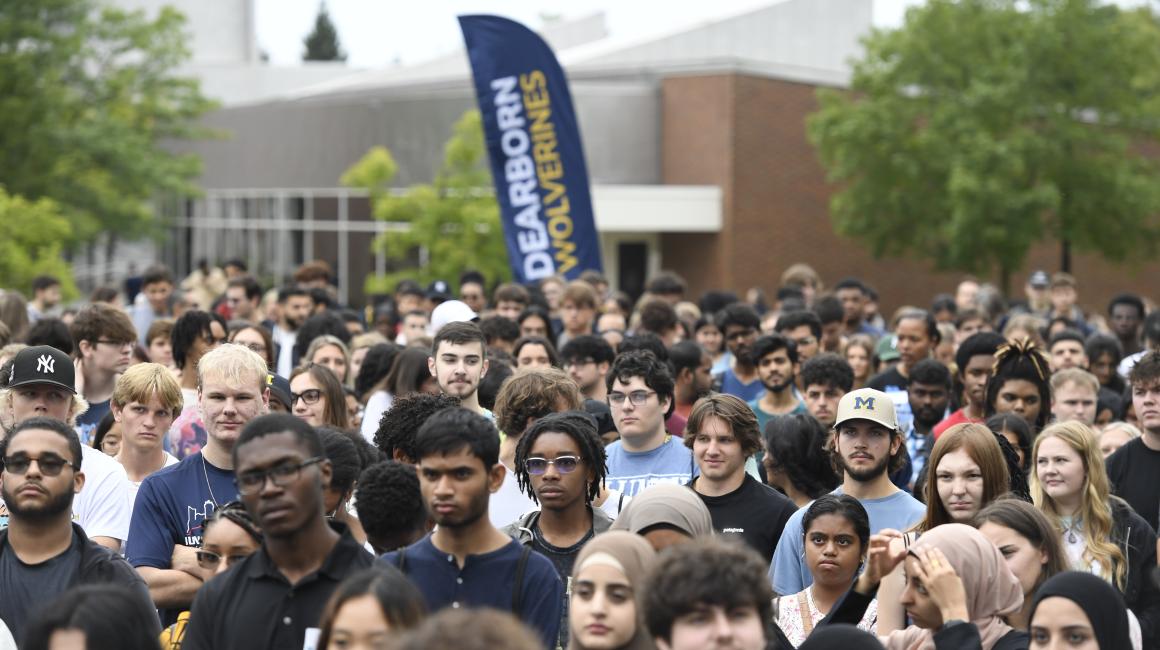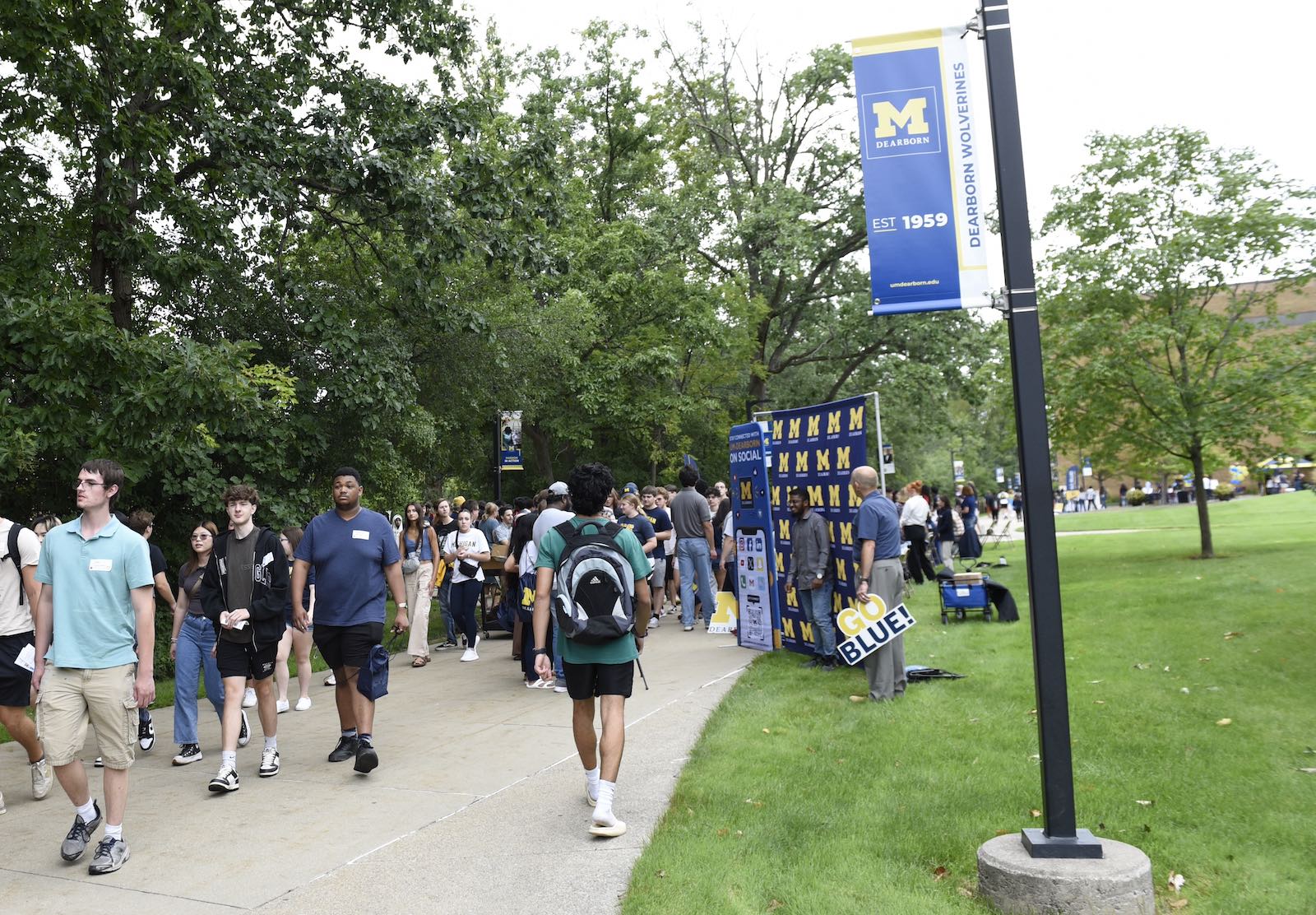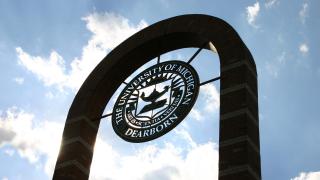More first-year undergraduate students enrolled at UM-Dearborn this fall than any other year in the university’s 64-year history.
Up 15% over last fall, the newest Dearborn Wolverine class came in at 1,157 students. The previous First Time In Any College (FTIAC) enrollment record was 1,107 in Fall 2017.
Course loads up, state support making a difference
The percentage of undergraduate students taking full course loads — which often leads to a more focused graduation path — is 79% in 2023, compared to 76% in 2022. In addition, the four-year graduation rate for FTIAC students saw an increase of nearly 5% over the prior year’s increase of 3%, and the transfer three-year completion went up nearly 4%.
“Our historic first-year enrollment is the result of hard work on behalf of the entire enrollment management team, and faculty and staff across campus. Enrollment and student success are priorities for all of us and we all play a part in the student experience,” said Chancellor Domenico Grasso. “Our shift to block tuition rates and other student success initiatives are having a positive impact not only on enrollment, but graduation rates as well.”
Vice Provost for Enrollment Management Melissa Stone said she can point to a few reasons for the record FTIAC enrollment. One is the university’s more targeted marketing approach. “It’s been three years since we implemented customized communication to prospective students so we share information that is most relevant to their needs. The students we began building relationships with in their sophomore year of high school are now entering college,” Stone said. “This is an example of a longer-term strategic enrollment plan initiative that is now yielding results.” The customized communication is one facet of the university’s comprehensive Strategic Enrollment Management Plan, which provides a process and framework for enrollment success.
Stone said the State of Michigan’s Michigan Achievement Scholarship also played a role in the increased number of students. The scholarship offers up to $5,500 per year, for up to five years, to Michigan high school graduates attending a Michigan public university. Stone said more than 60% of first-year UM-Dearborn students received this award.
State organizations also continue to support access to higher education. For example, a new statewide Michigan Assured Admission Pact, which was announced last week by the Michigan Association of State Universities, will help streamline the college admissions process. Beginning in Fall 2024, 10 participating MAAP universities, including UM-Dearborn, will admit in-state high school graduates who have earned a cumulative high school GPA of 3.0 or above on a 4.0 scale.
More students attending full time, graduating sooner
In overall Fall 2023 numbers, UM-Dearborn’s enrollment is down 2% when counting the number of students, but up 1% in credit hours. Stone said the slight enrollment decline is in part due to a piece of good news: students are graduating sooner. “It’s great to report that more students are attending college full time and graduating at faster rates. That is what we are here to help them do,” Stone said. “As positive as this news is, it is a reason why overall enrollment decreased a couple percentage points.”
Fall 2023 student enrollment is 8,037 students (6,071 undergraduates, 1,966 graduate-level), compared to 8,224 in Fall 2022. The incoming class saw a 1% increase in students of color. The total student population increased from 29% to 31% students of color.
Contributing to the overall enrollment decline is a decrease in graduate-level student enrollment, Stone said. Comparing domestic in-state graduate-level enrollment to pre-pandemic levels (Fall 2019), new graduate student enrollment is down 32% and down 45% among domestic out-of-state students, Stone said. Data from research centers like the National Student Clearinghouse has shown shrinking graduate enrollment is a national trend. Stone said factors may include steady employment rates, a labor shortage and experts forecasting a recession by early 2024.
On the international graduate enrollment side, Stone expected to see some decline after Fall 2022’s record numbers, which were attributed to a pent-up pandemic-related demand. When compared to pre-pandemic numbers (Fall 2019), however, Stone said international graduate enrollment increased 19%. In addition, the two-year graduation rate for masters-level graduate students saw an increase of 22% over the prior year, a direct result of more full-time international graduate students who graduate on time, but this also impacts overall enrollment.
Stone said the university is addressing the graduate enrollment challenge by seeking feedback from industry partners to further learn about educational needs, assessing current programs and restructuring a top-level leadership position. Showing the university’s commitment to graduate-level education, Vice Provost for Research Armen Zakarian was appointed the dean of Graduate Studies earlier this month. Zakarian will provide support for the development and implementation of new graduate academic programs and the revision of existing programs.
Investments in student support continue
Stone emphasized that the university continues to invest in undergraduate programs and resources. The university offers resource-connecting initiatives like the Wolverine Mentor Collective and Learn4ward, and scholarships like the Dearborn Comeback and the Go Blue Guarantee. Dearborn Support offers assistance with non-academic needs to keep students on the path to graduation.
The university’s record first-year enrollment is something to celebrate, but Stone — and nearly everyone paying attention to higher education trends — wonders: will the boost in first-year student enrollment across the state continue?
According to the Western Interstate Commission for Higher Education, the number of high school graduates in Michigan is expected to decline by 11.4% from 2022 to 2037. However, with only about half of students in Michigan pursuing college (52.8% in 2022), there is room for growth. And Fall 2023 FTIAC numbers show that with state investment, students are interested in enhancing their knowledge and skillset.
“I’m proud of the work done at UM-Dearborn and throughout the state to better connect students with ways to make college accessible. The people on this campus know how access to education can change the trajectory of a student’s life,” Stone said. “We have strong students who are here to succeed, and wonderful faculty and staff who are giving their all to help these students reach their dreams.”
Get more information on UM-Dearborn’s Fall 2023 enrollment and trends.
Article by Sarah Tuxbury.





